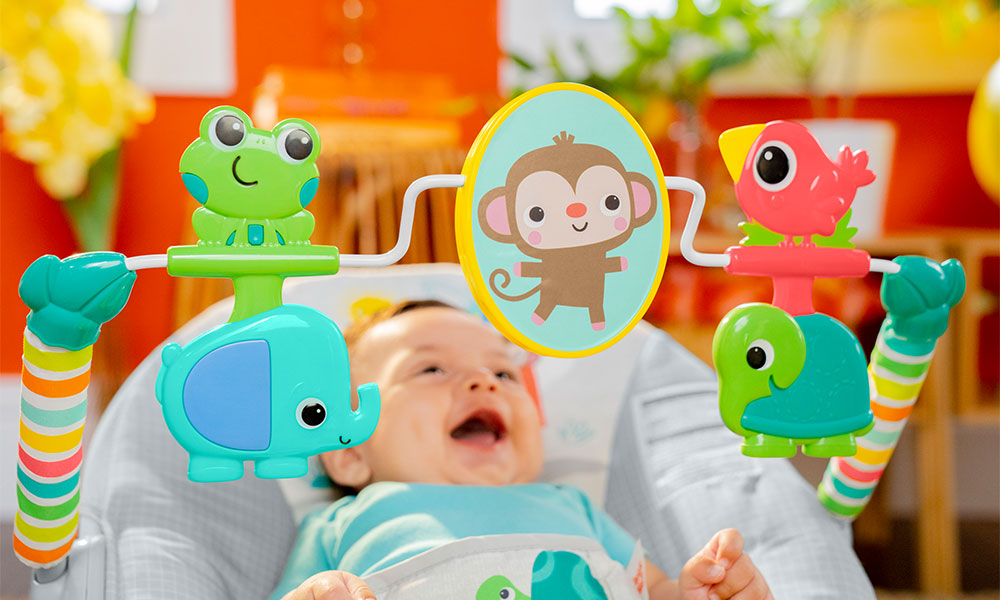I remember those early, sleepy days of new baby life both very well and not at all—time became a blur of napping, feeding, burping, playing, soothing, and feeding again. The usual rhythms of life felt very far away. I couldn’t remember when I last took a shower or sat down to eat a proper meal. Instead, I wiped crumbs from my toast off my baby’s soft head as I held him in one arm and fed myself with the other.
Slowly but surely, we settled into a new rhythm with our baby. Wake windows can help you do the same, and make sure they—and you—are getting essential sleep. Babies, kids, and adults need sleep to function at their best. (If you’re a tired parent, you don’t need reminding.)
A wake what? What is a wake window?
A wake window is exactly how it sounds, the stretch of time your baby or toddler stays up between one nap and the next, or from nap until bedtime—the time between fetching your little bundle of joy from their bassinet or crib and laying them back down. When babies are just born, they seem to drift off and wake up almost randomly. With time, their rest and wakefulness start to consolidate and follow a more predictable pattern.
Wake windows help parents get their baby back to sleep before they get overtired, which, counterintuitively, makes falling sleep even harder. Some babies will fall asleep like clockwork at the same time every day, while others are more unpredictable. Think of wake windows as a flexible suggestion rather than a set-in-stone rule.
Great, so what’s the right wake window for my baby?
There is quite a range here, and finding the sweet spot for your baby will take some trial and error. Pay attention to your little one’s cues that they are getting sleepy—these might involve rubbing their eyes, yawning, moving more slowly, and staring off into space. My first baby started to pull at her ears when she was tired. Once your baby is fussy or crying, they’re officially tired, and probably overtired. It’s still time to sleep, of course, it just might be more of a challenge to get them to drift off.
You’ll know you’ve got your wake windows right when naps and bedtime are not a battle (or less of a battle) and your baby is sleeping consistently for solid stretches.
These are general guidelines, not a hard-and-fast prescription:
- 1 to 2 Months: 1 to 2 Hours
- 3 to 4 Months: 75 Minutes to 2.5 Hours
- 5 to 7 Months: 2 to 4 Hours
- 8 to 10 Months: 2.5 to 4.5 Hours
- 11 to 14 Months: 3 to 5 Hours
- 15 to 24 Months: 4 to 6 Hours
Older kids require more awake to be tired enough for quality sleep. Your goal is to find the sweet spot between tired enough to fall asleep but not overly tired and melting into an exhausted puddle.
How do I make the most of my little one’s wake window?
Feeding, first. Babies need their sustenance to grow and develop, which they are doing nonstop. If babies don’t get enough nourishment during the day, they’ll be hungry at night, so prioritize feeding when they wake from a nap or in the morning.
Next—fresh air and sunlight are great choices when they are available. Some days that might mean a walk in the stroller or time in the park. Other times, it might look like putting the baby in the carrier and taking a simple trip to the mailbox, or even hanging out by an open window. Sunlight boosts Vitamin D, which helps regulate your baby's circadian rhythm by making the melatonin that will make nighttime sleep easier.
Next up: playtime! Physical activity is incredibly valuable for your baby’s brain and body development. Play is serious work for babies. As they interact with objects and the world, they practice thinking, making decisions, and problem solving. Plus, all that mental and physical stimulation will help them sleep more soundly.
Make sure you have a few safe spaces for your baby to play. We love the Bright Starts Playful Paradise Vibrating Baby Bouncer with Toys for multiple reasons. First, the bouncy seat helps your curious kiddo play and practice motor skills. Second, the silly monkey and friends will spin up sweet smiles as baby reaches to bat and spin the tropical toys hanging from above, including a baby-friendly mirror. Third, this safe seat has soothing vibrations to keep your little one happy for longer, so you have some hands-free time to do what you need to do.
Which brings us to the last essential on your wake window to-do list: face-to-face time. Quality time with a caregiver helps plant the seeds for language development. It also strengthens secure, confident bonds so that your baby feels more safe sleeping on their own. So, sing, chat, play peek-a-boo, and practice all your funny faces. Soon, it will be time for another restful sleep.



